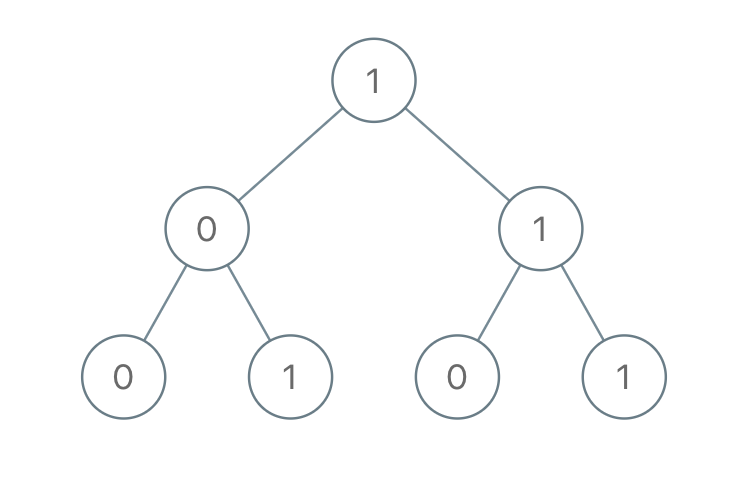QUESTION:
Given a binary tree, each node has value 0 or 1. Each root-to-leaf path represents a binary number starting with the most significant bit. For example, if the path is 0 -> 1 -> 1 -> 0 -> 1, then this could represent 01101 in binary, which is 13.
For all leaves in the tree, consider the numbers represented by the path from the root to that leaf.
Return the sum of these numbers.
Example 1:

Input: [1,0,1,0,1,0,1]
Output: 22
Explanation: (100) + (101) + (110) + (111) = 4 + 5 + 6 + 7 = 22
Note:
- The number of nodes in the tree is between
1and1000. - node.val is
0or1. - The answer will not exceed
2^31 - 1.
EXPLANATION:
这个题目就是一个DFS的问题。
什么才是leaf呢,就是既没有左节点也没有右节点。
那么怎么才能得到需要加上的数字呢。其实就是将每一条线路做一个标记。当到了最后的leaf的时候就将数字加上。
那么就很容易写出来了。
SOLUTION:
/**
* Definition for a binary tree node.
* public class TreeNode {
* int val;
* TreeNode left;
* TreeNode right;
* TreeNode(int x) { val = x; }
* }
*/
class Solution {
public int sumRootToLeafResult = 0;
public int sumRootToLeaf(TreeNode root) {
String val = "";
if(root!=null) val = root.val+"";
if(root.left!=null) sumRootToLeafHelper(root.left,val);
if(root.right!=null) sumRootToLeafHelper(root.right,val);
if(root.left==null && root.right==null) sumRootToLeafResult += Integer.parseInt(val,2);
return sumRootToLeafResult;
}
public void sumRootToLeafHelper(TreeNode root,String val) {
val += root.val;
if(root.left!=null) sumRootToLeafHelper(root.left,val);
if(root.right!=null) sumRootToLeafHelper(root.right,val);
if(root.left==null && root.right==null) sumRootToLeafResult += Integer.parseInt(val,2);
}
}